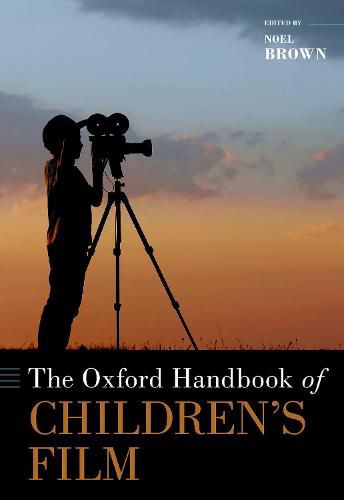Readings Newsletter
Become a Readings Member to make your shopping experience even easier.
Sign in or sign up for free!
You’re not far away from qualifying for FREE standard shipping within Australia
You’ve qualified for FREE standard shipping within Australia
The cart is loading…






The Oxford Handbook of Children’s Film is the most comprehensive study of international children’s cinema published to date. Overturning common prejudices that films for children are unworthy of serious attention, it presents nuanced and wide-ranging discussions from senior and junior scholars alike of iconic and neglected productions from Hollywood, Britain, France, Germany, Sweden, Norway, Hungary, Australia, China, Japan, South Korea, India, Iran, Kenya, and several other countries. Featuring contributions by leading scholars in the field, the volume considers a range of issues central to the study of children’s film, including questions of form and definition; representations of childhood and growing up; music, stardom, and performance; how children’s films reflect national identity or serve as vehicles of state ideology and propaganda; the phenomenon of Hollywood ‘family entertainment’, especially the role of the Disney company; and how children and young people (as well as older audiences) engage with children’s film culture. As a whole, the volume makes a substantial contribution to the emerging field of children’s film studies, and will be of great interest to scholars of children’s media and culture more broadly.
$9.00 standard shipping within Australia
FREE standard shipping within Australia for orders over $100.00
Express & International shipping calculated at checkout
The Oxford Handbook of Children’s Film is the most comprehensive study of international children’s cinema published to date. Overturning common prejudices that films for children are unworthy of serious attention, it presents nuanced and wide-ranging discussions from senior and junior scholars alike of iconic and neglected productions from Hollywood, Britain, France, Germany, Sweden, Norway, Hungary, Australia, China, Japan, South Korea, India, Iran, Kenya, and several other countries. Featuring contributions by leading scholars in the field, the volume considers a range of issues central to the study of children’s film, including questions of form and definition; representations of childhood and growing up; music, stardom, and performance; how children’s films reflect national identity or serve as vehicles of state ideology and propaganda; the phenomenon of Hollywood ‘family entertainment’, especially the role of the Disney company; and how children and young people (as well as older audiences) engage with children’s film culture. As a whole, the volume makes a substantial contribution to the emerging field of children’s film studies, and will be of great interest to scholars of children’s media and culture more broadly.